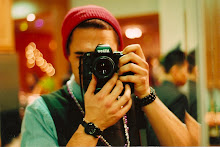american woodcuts from the 1890s to the present.

with classes in full swing i didn't have time to get out to the city this past friday like i usually do. i was excited to find out that there was a contemporary woodcut show up at the zimmerli. i took relief printmaking last semester and ended up enjoying this process. i also felt that it would be a nice change of pace from all the painting shows i have been seeing but there is often a dialogue that can occur between painting and woodcuts.
the exhibition is comprised of over 100 prints from the 1900s. the early woodcuts [from the early 1900s] included the work of "masters" like bertha lum, b.j.o. nordfeldt, gustave baumann and edna boies hopkins. from the gate i was really surprised with the high technical quality of the work. the colors were rich and dense, the registration was tight and the edges were super clean. the subjects were scenes of regular life...people working, animals, landscapes, etc. the works were modest, quaint and pretty small in size. woodcut was a traditionally japanese technique and it was easy to see this influence in some of the early work through the subjects and people depicted. i wasn't too interested in the subject matter of these earlier works...
...i was much more interested in the subjects of the work from the mid 1900s. these works we abstract and some of them paralleled abstract-expressionist painting. it was interesting to view the work in chronology because there was a definite transition into the full-blown abstract and even minimal works. artists like ansei uchima aided this transition with a series of abstracted landscapes. there was also a work by richard diebenkorn, who dipicts landscapes to the point they are unrecognizable and often organic shaped of color. it was interesting to read that there were something like 33 colors printed on 18 block [don't quote me on that]. it does not appear to
be that deep. here's a portion of it...

this shifted into a series of works by sherrie levine. her prints were also a very interesting process...with the arise of the rudimentary computer, levine was able to scan prints of famous paintings and pixelate them into 12 areas of bold color. she then inked 12 square blocks with those colors and bound them to for a grid that was 3x4 units. i really appreciated the innovation of this almost futuristic technique. these works transitioned into prints by famous minimalist artist, donald judd. he printed a series of 4 bold, pure cadmium red vertical and horizontal bars with the paper showing through each bar.
helen frankenthaler also had 2 nice prints in the show. they seemed to be an abstracted landscape and nude figure. i like the areas she chooses to depict, they are minimal and subtle but still convey enough inf0rmation. they exist well on the paper. i also like that the landscape was printed on colored paper. here's a portion of it...

i also liked the work of jim dine. he had two large prints that were ambitious because of this size. i liked the quality of his prints in the he incorporated the natural grain of the wood and i like his use of negatively hatched lines to create shading. his compositions were interesting in that they went well beyond the borders of the paper and created interesting negative spaces.
in summation i liked the work itself. there was an extensive amount of prints and a nice variance in techniques and styles. i wished that some of the works weren't behind glass though. i understand the need to protect the work but i found myself being distracted by my reflection sometimes. the work was a little too cluttered in the space and there was some periphery interference. there was minimal use of carve lines or integration of the wood grain. there is a definite element of beauty in the nature of the process and i wish it was embraced more often.
it's good to know that a valid and useful art resource lies in my backyard...


good detailed post
ReplyDelete